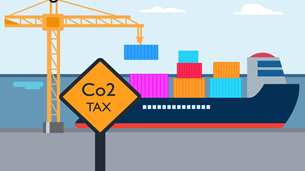

24th May 2023 (6 Topics)
Context
- Recently, the co-legislators at the European Commission signed the Carbon Border Adjustment Mechanism (CBAM).
Key Highlights:
- The regulation will put a fair price on carbon emitted during the production of carbon intensive goods entering the EU and encourage cleaner industrial production in non-EU countries.
- Importers will start paying the financial levy from 2026.

About: Carbon Border Adjustment Mechanism (CBAM)
- The European Green Deal is a plan to reduce carbon emissions by 55% by 2030 and become a climate neutral continent by 2050.
- It aims to avert 'carbon leakage', where EU manufacturers move carbon-intensive production to countries outside the region with less stringent climate policies.
- Importers in the EU would have to buy carbon certificates corresponding to the payable carbon price of the import had the product been produced in the continent.
- The Commission would be responsible for reviewing and verifying declarations and managing the central platform for the sale of CBAM certificates.
- Importers would have to annually declare the quantity and embedded emissions in the goods imported into the region in the preceding year.
Mechanism:
- The CBAM would be introduced in parallel with the phasing out of the allocation of free allowances given out under the EU Emissions Trading System (ETS).
- The ETS had set a cap on the amount of greenhouse gas emissions that can be released from industrial installations in certain sectors, but some allowances were given out for free to prevent carbon leakage.
- The EU concluded that this dampened the incentive to invest in greener production, so an import-based tariff was proposed.
Why are countries worried?
- CBAM would initially apply to imports of certain goods and precursors whose production is carbon-intensive and at risk of 'leakage'.
- Eventually, it would capture more than half of the emissions in ETS covered sectors.
- India, Brazil and South Africa would be most affected, while Mozambique would be the least-developing country.
- India's exports in the five segments represented less than 2% of the total exports to the EU between 2019 and 2021, but its long-term effects can be severe due to the EU being India's third largest trade partner and its projected growth trajectories.
- The two sides have agreed to intensify their engagement on carbon border measures.


